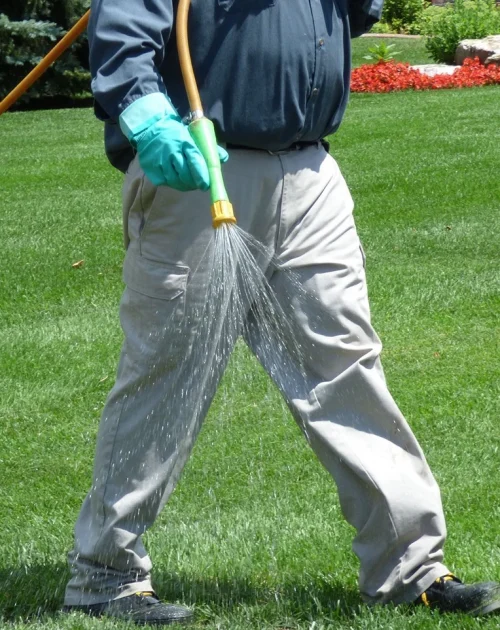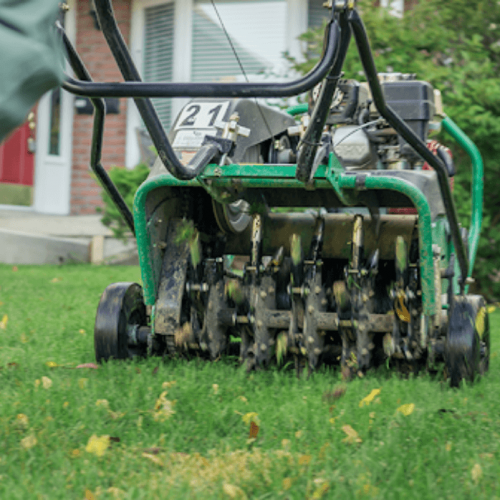All About Liquid Aeration: How It Helps Your Lawn
Ever look out over your yard in late summer and wonder why the grass looks dull and compacted—no matter how much you water or fertilize? That’s often the silent signal your soil is suffocating. Traditional aeration can fix that, sure, but there’s a modern twist more homeowners are turning to: liquid aeration.
It’s cleaner, faster, and surprisingly effective. But what exactly is it—and is it really better than the old plug-pulling method? Let’s break it down, one layer of soil at a time.
What Is Liquid Aeration, Exactly?
Think of it as a deep breath for your lawn—without the messy plugs left behind.
Liquid aeration uses a soil-loosening solution (usually made of natural acids, surfactants, and microbial additives) sprayed directly over your lawn. Instead of mechanically punching holes, it breaks up compacted soil chemically and biologically, creating microscopic pathways for air, water, and nutrients to reach the roots.
Unlike traditional core aeration, which treats only the areas where plugs are pulled, liquid aeration affects the entire surface, helping improve overall soil structure from the top down.

Why Soil Compaction Is Such a Big Deal
Over time, soil gets compressed by foot traffic, lawn equipment, and weather. That pressure squeezes out the tiny air pockets roots need to breathe.
Here’s what that leads to:
Water runoff instead of absorption
Shallow root growth
Patchy, thin grass
Weeds that love compacted areas (hello, crabgrass)
If your lawn feels hard underfoot, or you notice puddles after rain, that’s soil compaction waving a red flag.
How Liquid Aeration Works Beneath the Surface
Let’s skip the science lecture and keep it simple. When sprayed on the lawn, the liquid aeration solution penetrates into the soil. The ingredients work to:
Loosen tightly packed particles – surfactants reduce surface tension, allowing air and moisture to slip through.
Enhance microbial activity – the soil’s living organisms help rebuild structure naturally.
Improve nutrient flow – fertilizers and water reach deeper roots instead of sitting on the surface.
The best part? These effects compound over time. Each application helps your soil stay open and healthy longer, building resilience instead of temporary relief.
Core Aeration vs. Liquid Aeration — What’s the Difference?
Let’s be honest—core aeration has been the standard for decades, and it still works. But it’s not always ideal. Traditional aeration involves removing small plugs of soil to relieve pressure. It’s effective, but messy and time-limited.
Liquid aeration, on the other hand:
Covers 100% of your lawn surface
Doesn’t disrupt existing grass or leave dirt plugs
Can be done more frequently and paired with fertilization
Works gradually to condition the soil over time
Think of it like comparing a deep tissue massage (core aeration) to consistent stretching and hydration (liquid aeration). One’s more intense, the other’s gentler but equally powerful in the long run.

A Quick Note on Soil Health
Your grass’s health starts underground. Aeration—whether liquid or traditional—only works when you think of your lawn as a living ecosystem. Every treatment you add should nurture that balance: the soil microbes, root networks, and organic matter that make up the unseen foundation of every beautiful lawn.
For a deeper scientific explanation of how soil compaction affects plant growth, check out this resource from The University of Minnesota Extension.

The Bottom Line
Liquid aeration isn’t a gimmick; it’s the next evolution in smart lawn care. It saves time, avoids damage, and keeps your soil healthier from season to season.
At The Organic Turf Company, we’ve seen firsthand how switching to liquid aeration transforms yards—helping homeowners get greener, stronger lawns without the hassle. If your lawn looks tired, compacted, or just not as vibrant as it should, it’s probably asking for air.
Give it that breath of life it deserves.
Schedule your Liquid Aeration Service with The Organic Turf Company.

